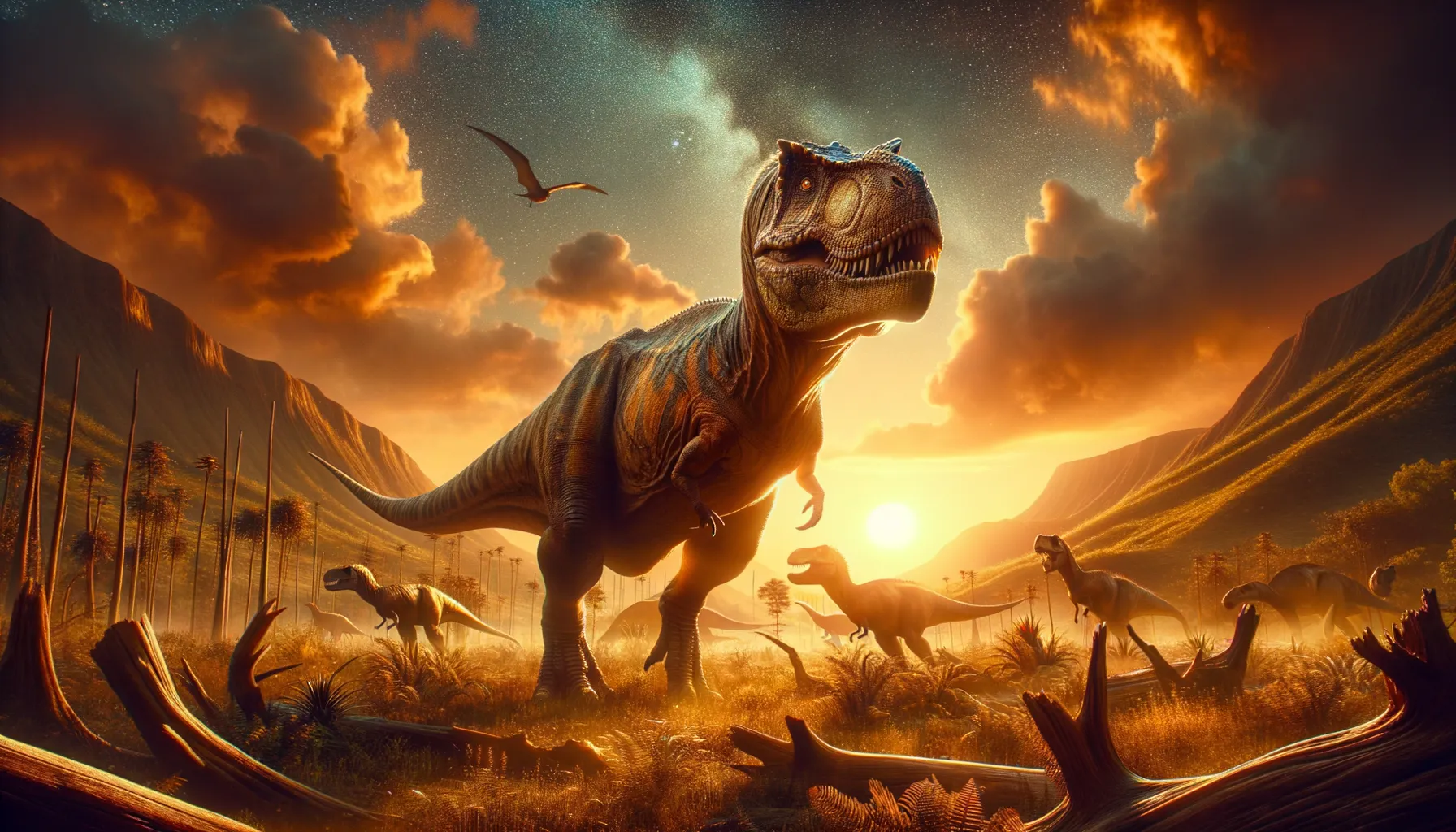
Soumyasaurus
The adaptable creature of the Cretaceous!
Period
Cretaceous
Length
Measured up to 9 meters in length.
Height
Around 3 meters tall at the hips.
Weight
Approximately 2,500 kilograms.
Soumyasaurus is a fascinating dinosaur from the Late Cretaceous period, known for its distinctive features and adaptability. This dinosaur roamed the earth millions of years ago and was a unique member of its ecosystem. It had moderate running capabilities, which helped in eluding predators and catching prey. Its physical characteristics and social behavior provide intriguing insights into the diversity of dinosaur life.
Diet
Soumyasaurus was an omnivorous dinosaur, consuming a variety of vegetation and small animals. It foraged in its environment, taking advantage of the diverse plant life that flourished during its time.
Hunting
As an opportunistic feeder, it employed ambush tactics to catch smaller animals. It relied on its keen sense of smell and moderate speed to capture prey effectively.
Environmental challenges
During its time, Soumyasaurus faced significant environmental challenges such as fluctuating climate conditions and volcanic activity. These changes impacted the availability of food resources, necessitating adaptations in its diet and behavior. Competition with other herbivorous and omnivorous dinosaurs was also a persistent challenge.
Speed
Moderate pace, agile for quick sprints.
Lifespan
Lived up to 20 years in the wild.
First discovery
Unearthed in 2010 in central Asia.
Fun Facts
- Soumyasaurus was a plant-eating dinosaur that lived around 100 million years ago during the Late Cretaceous period.
- It was approximately the size of a modern elephant, making it a massive creature of its time.
- Fossils of Soumyasaurus have been found in what is now known as Asia, indicating it roamed this continent millions of years ago.
- This dinosaur is believed to have traveled in herds, providing protection from predators.
- Soumyasaurus had a distinctive frill on its head, potentially used for display or communication among its species.
- Paleontologists think that Soumyasaurus lived in forested environments, feeding on a variety of plants and foliage.
- Despite its size, Soumyasaurus was likely agile, helping it navigate through dense forests in search of food.
Growth and Development
Soumyasaurus exhibited rapid growth during its early years, reaching near adult size in a few years. This growth spurt was crucial for evading predators. Over time, its bones became more robust, supporting its substantial body weight and enhancing its durability.
Habitat
Soumyasaurus thrived in lush, forested environments with ample vegetation. It preferred regions with reliable water sources and diverse plant life. These habitats provided shelter and food, crucial for its survival.
Interaction with other species
It often coexisted with other dinosaur species, engaging in competitive interactions for resources. Territorial disputes with similar-sized dinosaurs were common, although outright conflicts were occasional. Mutualistic relationships with smaller species might have existed.
Natural lifespan
In the wild, it typically lived up to 20 years.
Reproduction
The species likely employed a nesting strategy, with females laying a clutch of eggs in protected areas. Parental care might have been present, with adults guarding nests to ensure the survival of their young.
Social behaviour
Soumyasaurus may have exhibited social behavior, forming small groups for social interactions and protection. These groups could have functioned cooperatively, particularly in resource-rich areas.
Fossil locations
Fossils of Soumyasaurus have been predominantly found in central Asian regions, providing valuable insights into its lifestyle. Additional fragments have been uncovered in other parts, leading to collaborative efforts among paleontologists.
